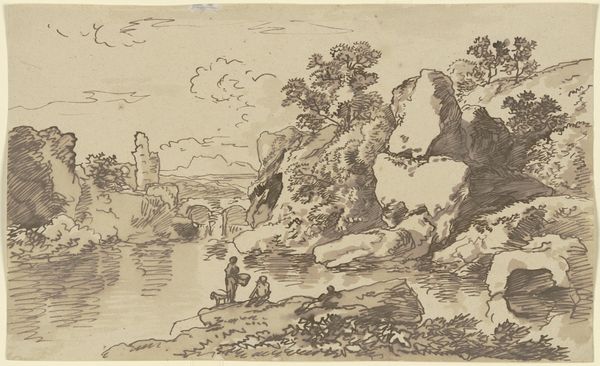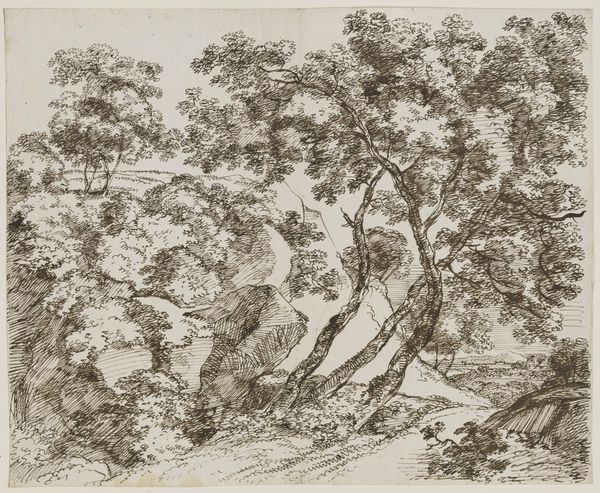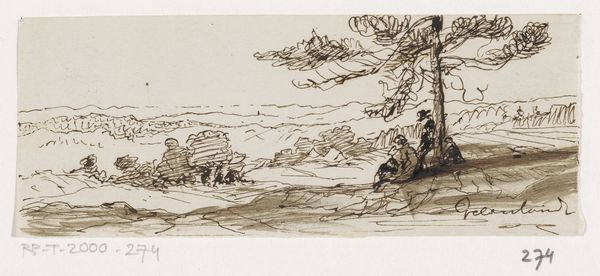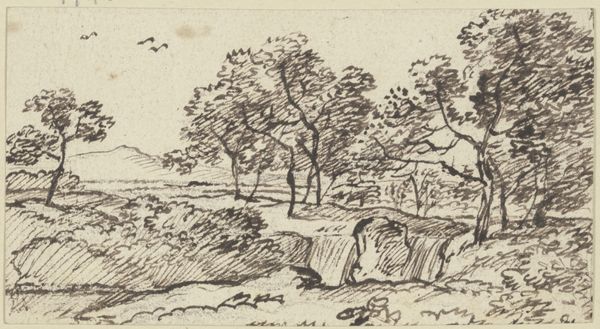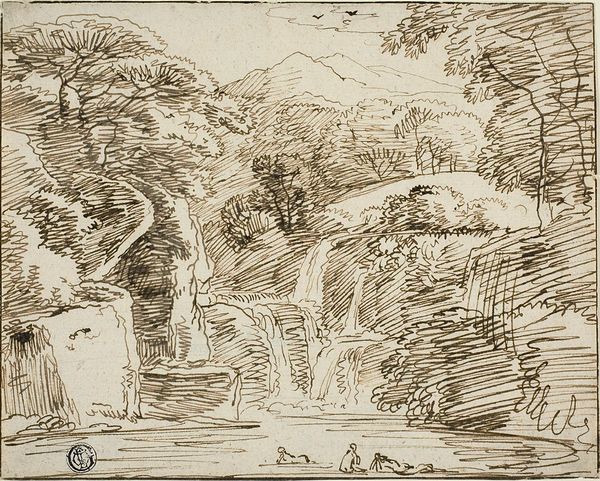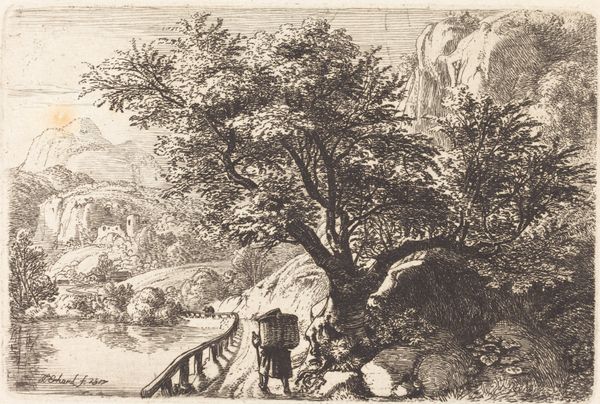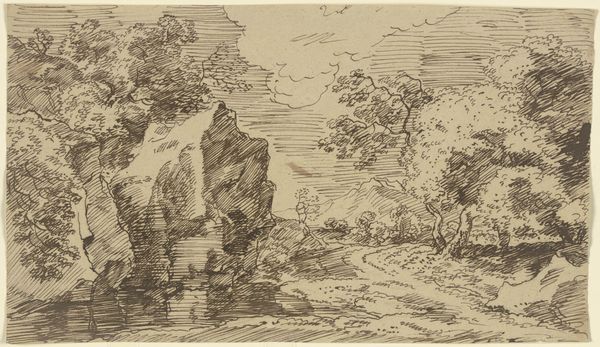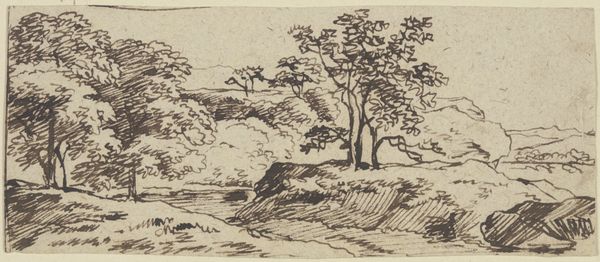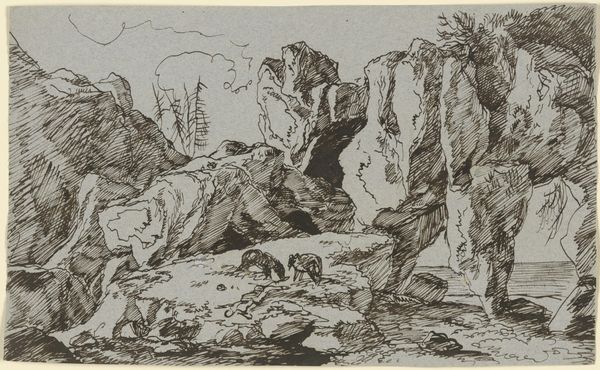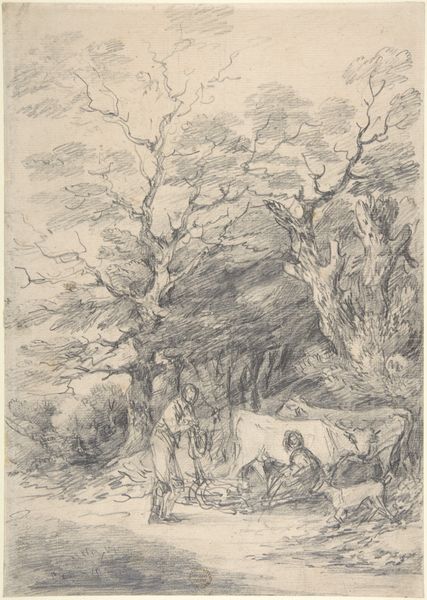
drawing, plein-air, watercolor, ink
#
drawing
#
plein-air
#
landscape
#
etching
#
figuration
#
watercolor
#
ink
#
romanticism
#
15_18th-century
#
watercolour illustration
#
genre-painting
Copyright: Public Domain
Curator: Here we have Johann Andreas Herrlein’s work, “Ein Hirte mit drei Ziegen, Wassser schöpfend”, currently held in the Städel Museum’s collection. The work, translated to “A Shepherd with Three Goats, Drawing Water” depicts…well, precisely that, in ink and watercolor. What’s your first impression? Editor: There's a delightful sketch-like quality. The composition has a certain roughness to it, but balanced by soft washes. Notice the repetition of strokes defining volume and the texture, which feels so spontaneous. Curator: I think focusing on the spontaneous aspect is essential here. Many Romantic era landscape paintings, especially plein-air works, grapple with notions of immediacy and authenticity. Editor: It's intriguing how Herrlein uses ink to establish the solid structural elements, like the little stone bridge on the left. But then he seems to undermine them by overlaying this somewhat misty watercolor. Curator: He's definitely playing with texture, as you mentioned earlier. Look at how the washes build up a sense of depth on that rocky hillside, which is interesting given how flat much of the rest of the scene appears to be. This contrast creates a compelling spatial ambiguity, but perhaps is influenced as well by a culture and context for “finished” versus “preparatory” pieces of art. Editor: True, the light is wonderfully distributed to unify forms, almost to make one continuous undulating mass, creating a harmony amongst its rustic labor. Is Herrlein depicting actual agricultural work, or is there something else? Curator: Given the timeframe, one might read this in the light of increasingly industrial labor taking the stage; certainly, an idealization of the simpler agricultural ways. How would Herrlein reconcile his choice of subject matter within this rapidly modernizing framework? And the water-drawing theme itself has biblical parallels which should be taken into consideration. Editor: This artwork’s rustic charm contrasts a deep undercurrent about changes in working life at the time it was conceived, rendered masterfully using available means of production like watercolors, inks, and plein air style! Curator: It's interesting to view a drawing like this, as a document of the transition and change which had defined labor at that time. Thank you for providing new ways to see this work!
Comments
No comments
Be the first to comment and join the conversation on the ultimate creative platform.



